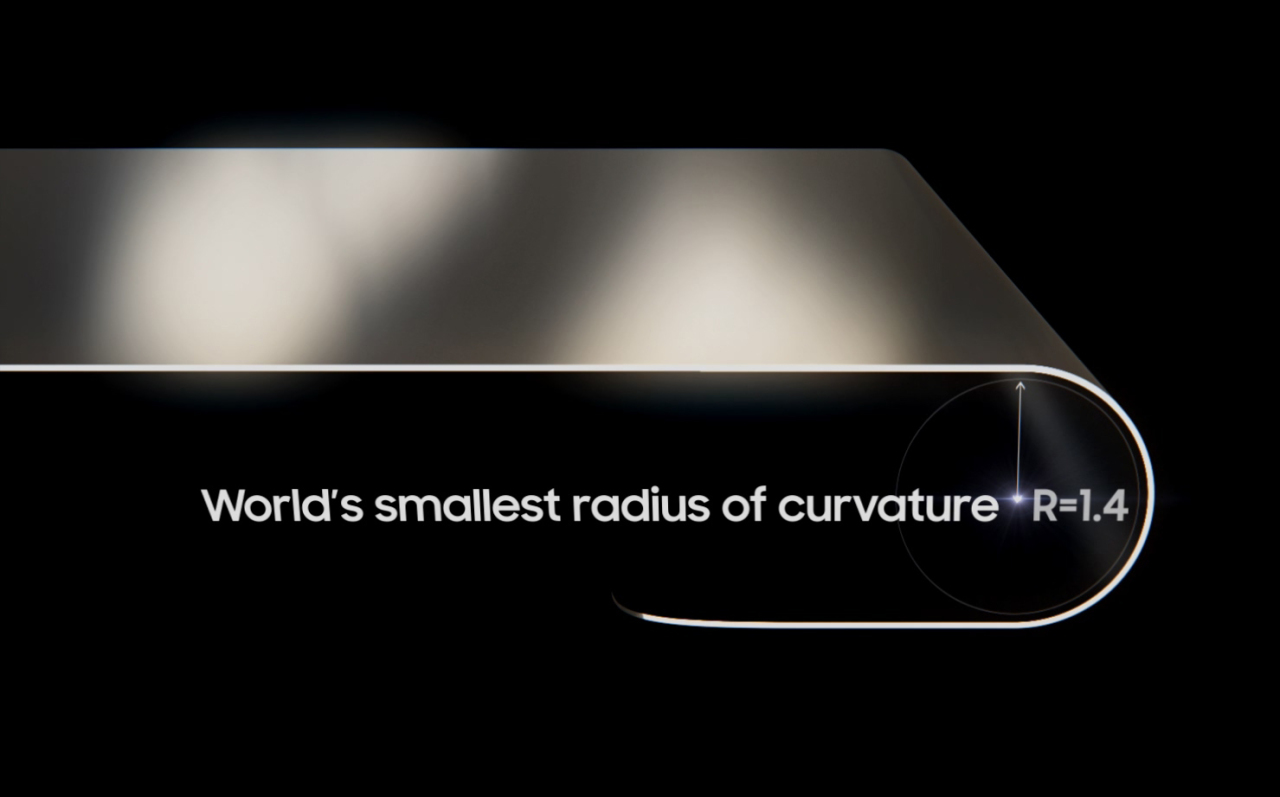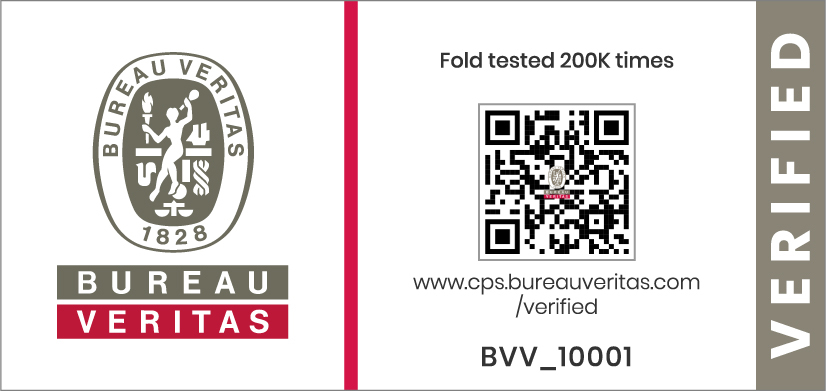 |
| Samsung Display’s 1.4R OLED offers the highest level of foldability in the industry. (Samsung Display) |
Samsung Display said Wednesday that its latest organic light-emitting diode displays can fold with the narrowest gap compared with any rival product around the world that is commercially available as a smartphone component.
Through technology optimization, this new and enhanced display can withstand around 200,000 folds despite using ultrathin glass instead of colorless polyimide, Samsung Display said.
Samsung Display’s 1.4R OLED displays are used in Samsung Electronics’ latest foldable handset, the Galaxy Z Fold2.
The 1.4R here refers to the peripheral curvature of a circle that has a 1.4 millimeter radius. The smaller the radius, the smaller the gap the screen leaves when folded.
Among commercially available OLED screens, 1.4R is the one that folds the tightest, Samsung Display said.
This is the third foldable OLED that Samsung Display has put out, having used them on the first Galaxy Fold followed by the Galaxy Z Flip.
The 1.4R foldable OLED has a resolution of 2,208 by 1,768 and a 7.6-inch screen.
A notable side effect of the smaller folding radius is the increased folding stress -- the contrasting pressures applied to the front and rear layers of the display screen.
It is more difficult to develop a screen that folds inward rather than outward because in-folding screens have smaller curve radiuses, which lead to greater folding stress.
Samsung Display said it has optimized the materials, design and modules for layer-stacking so as to offset folding stress as much as possible.
 |
| Bureau Veritas confirms that Samsung Display’s 1.4R OLED can be folded 200,000 times. (Samsung Display) |
Samsung Display currently accounts for over 90 percent of the global foldable OLED panel market, meaning that the more foldable phones out there on the market the better it is for Samsung Display’s business.
Meanwhile, Ross Young, founder and CEO of Display Supply Chain Consultants, said on Twitter that Huawei’s foldable gadget Mate X2 would not launch in 2020 due to the US government’s trade restrictions, adding that his company had reduced its foldable forecasts.
Although the supplier of screens for the Mate X2 is not public knowledge, considering how Samsung has a near monopoly over the foldable OLED market and supplied screens for the Mate X, this launch delay is not welcome news in the eyes of Samsung investors.
Among industry watchers, there are some who believe lack of product competition may increase sales of Samsung Electronics’ Galaxy Z Fold2.
By Lim Jeong-yeo (
kaylalim@heraldcorp.com)









